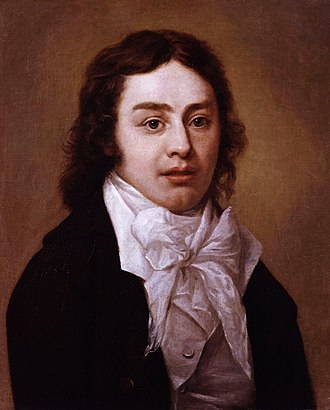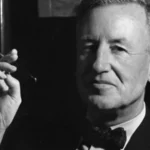The 1789 publication of Lyrical Ballads by William Wordsworth and Samuel Taylor Coleridge challenged the established taste for poetry, sparking extensive critical debate and setting a new direction in poetic thought. It marked the beginning of English Romantic poetry and to this day remains one of the “punk moments” in English literature, as Nicholas Lezard of the Guardian wittily put it.
The collection was groundbreaking in its departure from traditional poetic norms, such as grandiloquent language, sophisticated rhymes, and classicist themes. Instead of promoting idealism, heroism, religious motifs, and established moral values, the poems celebrated the everyday life of common people, including societal outcasts – in a simple, conversational language.
Another notable breakthrough was the introduction of fantastic elements, most notably through Coleridge’s The Rime of The Ancient Marriner. By evoking a sense of the supernatural through spirits, omens, and magical occurrences, this poem sets the stage for a further development of the emerging fantasy genre.
Coleridge’s “Suspension of Disbelief”

As a scholar and philosopher who extensively explored German idealism, Coleridge studied the concept of imagination, placing it at the heart of his poetic work. In addition to The Rime of the Ancient Marriner featured in Lyrical Ballads, his later poems such as “Kubla Khan,” and “Christabel” abound in fantastic imagery. Their use of folk traditions blended with mystery and the sublime can be said to have set the tone for what would later become a distinct literary genre – fantasy.
To provide a critical context for the occurrence of such elements, Coleridge drew upon his notion of imagination as a living power to create and recreate the world. In his 1817 work Biographia Literaria, he introduced the concept of “willing suspension of disbelief”, arguing that a reader’s mind can transcend known reality and naturally embrace the impossible in a work of fiction. He believed this helped in “awakening the mind’s attention from the lethargy of custom and directing it to the loveliness and the wonders of the world before us.”
A similar thought would echo in Tolkien’s critical essay written over a century later, long after the English literature had broken from the realist tradition of the Enlightenment era represented by Defoe, Fielding, and Richardson. By pushing the barriers of reality, Coleridge’s work and the Romantic movement in general empowered a wider adoption of fantasy in literature written for adults.
Gothic fiction was already in the making at the time and was beginning to reach wider audiences in the first decades of the 19th century. Fantasy thus started being written and read beyond children’s literature. However, it will take more than half of a century for it to take on modern shape, and even longer to be recognized as a distinct genre. This first happened with the works of Lord Dunsany, an author credited with inspiring later fantasy writers such as Tolkien and C.S. Lewis. Tolkien’s critical work in particular can be said to have fueled the golden age of fantastic literature.
Tolkien’s “Secondary Belief”

The first few decades of the 20th century saw a growing interest in the increasingly diverse and prolific genre of fantasy, among both readers and critics. While some literary scholars still considered it children’s literature, Tolkien argued that it could be read by adults as well. One of his notable works on the topic is his 1938 essay titled “On Fairy-Stories”, where he attempted to explain the mechanisms of fantastic literature by defining what it is, or rather what it is not.
In this essay, he builds upon Coleridge’s concept of “willing suspension of disbelief”, arguing that we do not simply embrace the impossible with our existing belief system. Contrary to Coleridge, he believed that well-written fantasy allows us to develop an entirely new secondary belief system, which enables us to accept the fantastic in literature.
“Children are capable, of course, of literary belief, when the story-maker’s art is good enough to produce it. That state of mind has been called “willing suspension of disbelief.” But this does not seem to me a good description of what happens. What really happens is that the storymaker proves a successful “sub-creator.” He makes a Secondary World which your mind can enter. Inside it, what he relates is “true”: it accords with the laws of that world. You therefore believe it, while you are, as it were, inside.”
He further argues that “suspension of disbelief” as described by Coleridge, is merely a “substitute for the genuine thing” and that the fantasy writer has a bigger task at hand. The story maker, in his view, must build a world that appeals to the imagination of an adult reader the same way traditional fairy tales appeal to children. He also emphasizes that any work relying on dream mechanics to depict and explain marvelous events is not a real fairy story. He gives an example of Lewis Carroll’s Alice stories, dismissing them as fairy-stories due to their use of dream-frame and dream-transitions.
“It is at any rate essential to a genuine fairy-story, as distinct from the employment of this form for lesser or debased purposes, that it should be presented as “true.” The meaning of “true” in this connexion I will consider in a moment. But since the fairy-story deals with “marvels,” it cannot tolerate any frame or machinery suggesting that the whole story in which they occur is a figment or illusion.”
Further in the essay, Tolkien examines the origins of fairy stories and their traditional connection to children’s literature. This analysis leads him to a conclusion that “fairy-stories should not be specially associated with children.” Instead, he suggests adults should read them as “neither playing at being children, nor pretending to be choosing for children, nor being boys who would not grow up”.
This means they need to employ their secondary, at this age often dormant belief system to embrace the fantastic. The value of such reading is the awakening of the imagination of an adult who is otherwise preoccupied with trivial daily issues and routines. Fantasy thus helps release suppressed feelings and makes us feel genuine childish joy.
“The consolation of fairy-stories, the joy of the happy ending: or more correctly of the good catastrophe, the sudden joyous “turn” (for there is no true end to any fairy-tale): this joy, which is one of the things which fairy-stories can produce supremely well, is not essentially “escapist,” nor “fugitive.” In its fairy-tale—or otherworld—setting, it is a sudden and miraculous grace: never to be counted on to recur. It does not deny the existence of dyscatastrophe, of sorrow and failure: the possibility of these is necessary to the joy of deliverance; it denies (in the face of much evidence, if you will) universal final defeat and in so far is evangelium, giving a fleeting glimpse of Joy, Joy beyond the walls of the world, poignant as grief.”
Taking a more rational stance, Tolkien underscores that Fantasy is a natural human ability that can in no way harm or “even insult Reason; and it does not either blunt the appetite for, nor obscure the perception of, scientific verity.” On the contrary, it is complementary to our rational thinking, making us feel complete.
Cognitive Functions of Fantasy Explained by Science
The question of the curious ability to embrace fantasy as an adult was not a topic addressed by literary authors only. In the late 20th century, neuroscientists also set out to explain why the human brain is inherently capable of acknowledging the irrational, just as we do in dreams all the time.
In the book titled Literature and the Brain, Norman N. Holland draws upon Coleridge’s concept to describe what is really going on inside our brains when we read fantasy books or watch fantasy movies. Using examples of watching a Spider-Man movie without questioning the logic behind using the web go swing over skyscrapers or Terminator without disregarding a robot’s ability to re-constitute himself after melting into a pool of mercury, he points to various cognitive processes that help us imagine such scenarios and accept them as part of everyday life.
He explains that it is thanks to common brain functions responsible for movement planning and the surrounding parts of the central sulcus associated with filtering sensory information that we are able to temporarily neglect our body and our environment. He also briefly touches on the complex and elusive connection between our emotions and our brain impulses, which influence our thinking and can eventually lead to the intricate state of regression. The essay uses this psychoanalytic concept to explain how we use more primitive parts of our brains to shut down the known science-based value systems and put our imagination at work.
“We humans have these wonderful primate brains, these prefrontal cortices, that enable us to devise comedies and concertos and computers and all the wonderful things of our human environment. These same prefrontal cortices enable us to devise nuclear arms and bioweapons and terrorist attacks.”
Conclusions
The process is, of course, too complex to fit into a couple of paragraphs, and we won’t even attempt to interpret Holland’s work in any more detail. However, his research only underscores the greatness of Coleridge’s and Tolkien’s literary and critical work. Their very attempt to not just use, but also explain the intricate neurological perception of fantasy illustrates their extraordinary worldview and their impressive capability to push art beyond the limitations of established norms. The greatness of their task is reflected in today’s popularity of fantastic literature, and the very fact we hardly need any explanation to enjoy such types of fiction.
- Writing and Espionage: 7 Notable Literary Figures Who Were Also Spies - September 22, 2025
- On Embracing the Fantastic in Literature: Coleridge vs. Tolkien - March 23, 2025
- 7 Everyday English Words Coined by Coleridge - May 27, 2024


